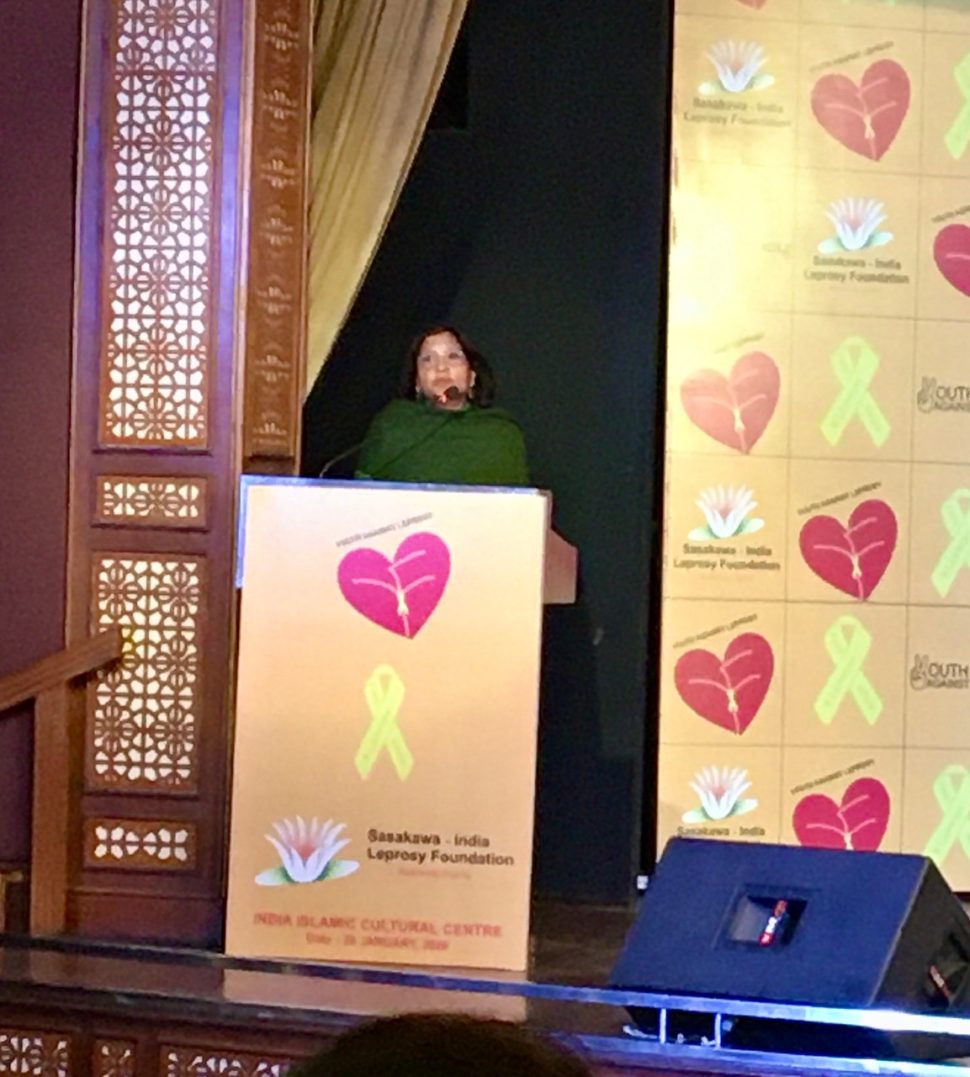Dr. Vineeta Shanker, is the executive director of Sasakawa- India Leprosy Foundation (S-ILF). She was in attendance at S-ILF’s ‘Youth Against Leprosy’ youth festival 2020. The event aims to raise awareness about leprosy and to end the discrimination faced by people affected by leprosy, and their families.
Dr. Shanker spoke to News Ripples of the leaps and bounds the foundation has come by, challenges surrounding leprosy, and the future steps S-ILF is seeking.
It will be 14 years, this year, since S-ILF was first instituted to end stigma & discrimination against leprosy. Where do we stand right now in terms of winning the battle against the disease?
As far as battling the disease is concerned, there is a cure for leprosy founded in the early 1980s, and since then the government has been proactive in reaching out to the larger masses. Initially, the target was to bring down the prevalence level to less than 1 per 10,000 population since this was the number set by the WHO as a benchmark to eliminate leprosy as a public health concern.
India, in 2005, declared itself having eliminated leprosy as a public health concern. This, however, doesn’t mean that leprosy has been completely wiped out. The national average hid regional disparities, leaving areas that were still endemic. Over the last three-four years, the government has woken up to this discrepancy and to the stagnant prevalence level and has refocused to a ‘Seek and Treat’ program. This programme looks at the endemic districts, going house-to-house to identify people who might be affected by leprosy and treat them for it. The number of cases identified indicates the rate of success as leprosy will not lead to disability in people now treated. The programme has also been successful in cutting down the transmission rate.
Another great move forward is the trial and eventual introduction of a first in the world, vaccine for leprosy, being indigenously developed in Jalma Institue of Leprosy & Other Mycobacterial Disease, Agra. Furthermore, India is also experimenting with a prophylactic dose, which is one of the three antibiotics used to treat leprosy.
What have been the accompanying social successes and changes?
Over the 14 years that we have been working, we find that, though not completely over, the discrimination has definitely gone down. As disabilities lower and the visual impact of leprosy becomes less stark to deal with, the stigma will lessen and the society will not treat the people in an exclusionary manner.
At the same time, a stigma is like an onion- you peel it and find another, deeper layer to it. We can’t expect it to change overnight, but we will get there as there’s no reason for us not to.
The government, also on the social front, have been examining more than 108 different laws, containing clauses which discriminate against leprosy. In fact, there’s been a plea in the parliament for the eradication of laws that discriminate against people affected by leprosy.
What are the specific challenges that remain?
The ‘Seek and Treat’ programme is right now only restricted to the endemic areas and districts and since leprosy has a long gestation period, it can show up even in the non-endemic areas in the years to come. So, our plea to the government is for a mass awareness campaign to instil the confidence that leprosy is easily treatable and curable to avoid disabilities.
We want the programme to spread out even to the non-endemic regions, nationwide to change the social mindsets so leprosy becomes just another disease. The only other concern we have is to be able to create an environment where atleast the government is not being discriminative against leprosy- therefore the plea and the laws stand strong.
We also need to be engaged in more proactive work with leprosy affected people, such as creating more opportunities in the field of employment, be it corporate or self-employment. We, at S-ILF, are providing financial & technical help and building capacity to help the people with leprosy set up their own enterprises, which forms a sustainable and dignified way of earning livelihoods. Our objective is to enable these people to build skills and knowledge to become productive members of society.
What is the objective of involving the youth in this initiative?
We try and raise awareness through the youth because we strongly believe that they are the best communicators. Being the forerunners of change, the youth of today have the potential to drive the system into different ways of thinking and change the mindsets.
Through the youth, we are generating an army of brand ambassadors to bring about change and eradicate the discriminatory mindsets against leprosy and leprosy affected people. We hope to reach out maximum number of youth every year through S-ILF’s Youth Festival at both regional and national level.
With S-ILF running so many successful programmes, covering areas of livelihood, education and creating awareness, what’s next for S-ILF?
We are looking towards the advocacy for our initiatives. To bring about a sustainable change, we want to be able to work with the government and other stakeholders.
Similarly, the next step is to also work with the corporate sectors. We are in the works of signing an MoU with the CII in order to take the awareness drive to all the other members of the group.
What would you want the audience to know about leprosy? Any message you’d like to give to them?
One of the most important messages is that leprosy is not a thing to fear about. Stigmas come out from a sense of fear, and in this case, there should not be any fear since leprosy is amongst the least infectious diseases (as defined by WHO), there’s a cure for the disease and the treatment is easily available. So, there’s really no substantial reason to discriminate and stigmatised those affected by leprosy.
This is the plea for acceptance and to spread the word to end discrimination against leprosy.

